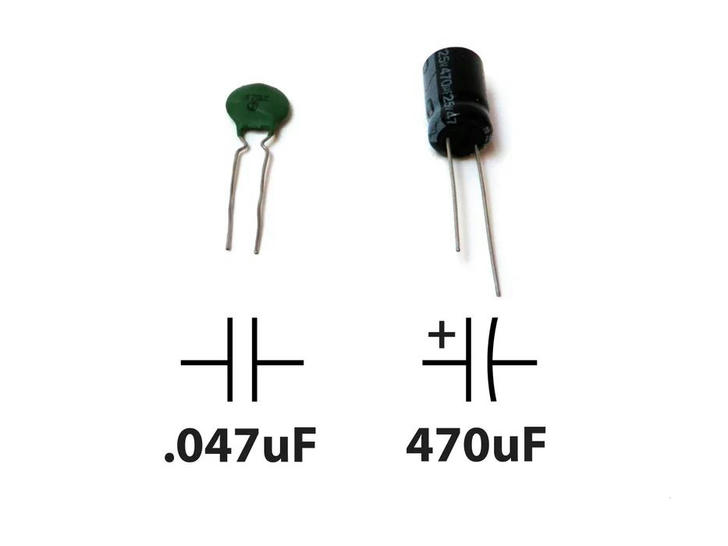Basic Electronics for Beginners in 20 Steps
Step 7: Capacitors

A capacitor is a component that stores electrical energy and discharges it into the circuit when the power drops. Think of it as a water storage tank that releases water when needed to maintain a steady flow.
Capacitance is measured in Farads, and you'll usually encounter values in picofarads (pF), nanofarads (nF), and microfarads (uF). These units can be used interchangeably, and it's helpful to have a conversion chart available.
The most common types of capacitors are ceramic disc capacitors, which look like tiny M&Ms with two wires sticking out, and electrolytic capacitors, which resemble small cylindrical tubes with wires at one or both ends.
Ceramic disc capacitors are non-polarized, meaning the direction of insertion doesn't matter. These are often marked with a code that you'll need to decode. They are usually represented in circuit diagrams as two parallel lines.
Electrolytic capacitors are polarized, meaning one leg must connect to the ground side of the circuit and the other to the power side. If connected the wrong way, they won't work. These capacitors have the capacitance value marked on them, typically in uF, and the leg connected to the ground side is marked with a minus symbol (-). In schematics, these are represented with one straight and one curved line, where the straight line connects to power, and the curved line connects to ground.
